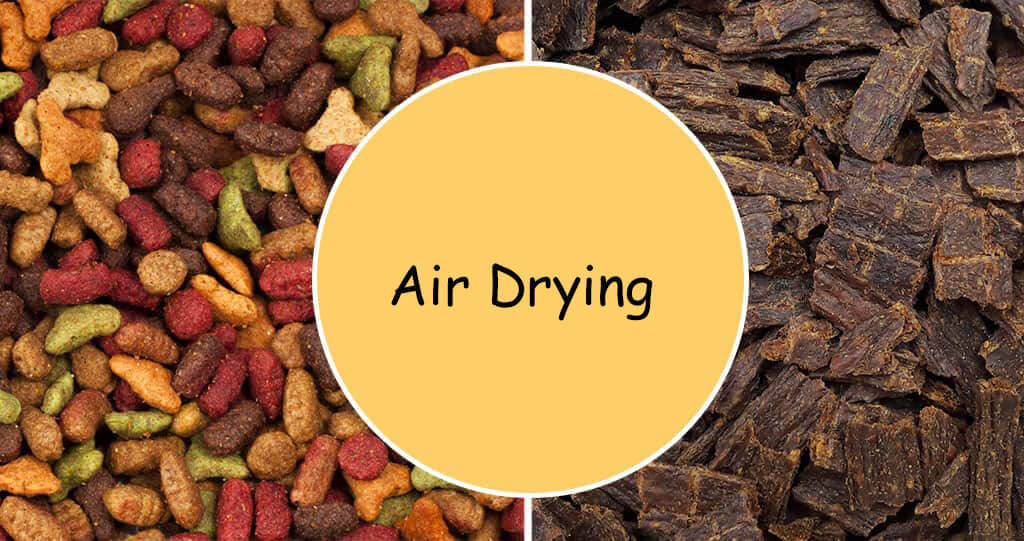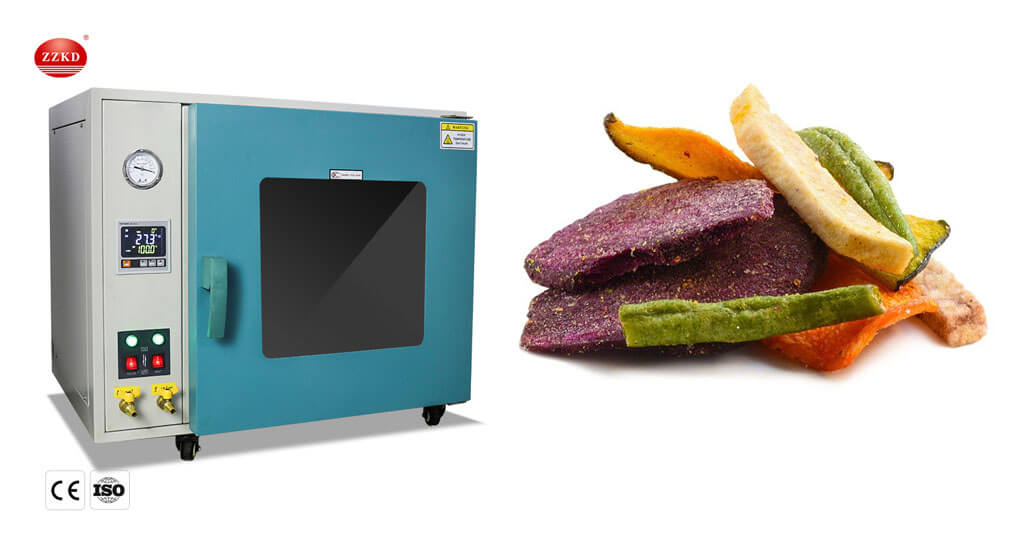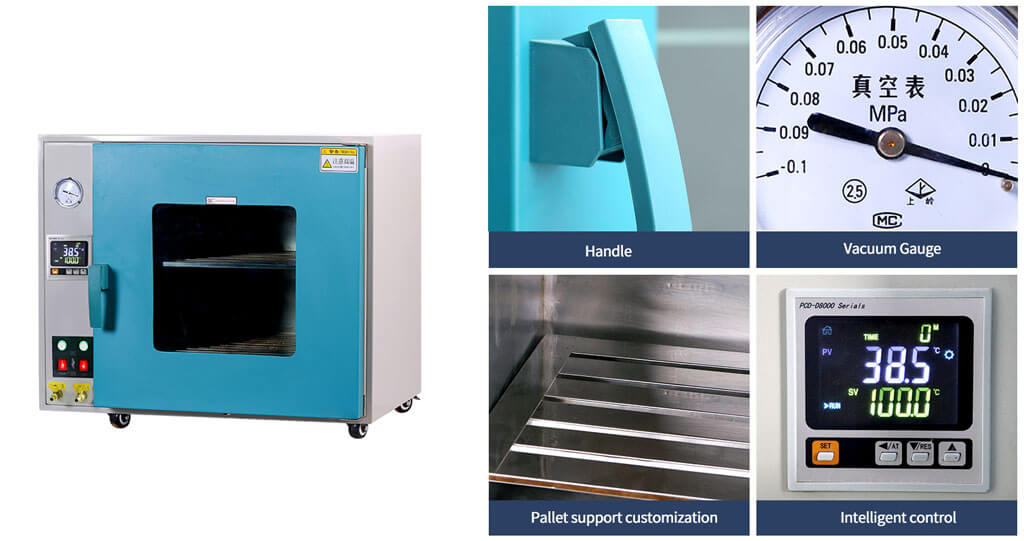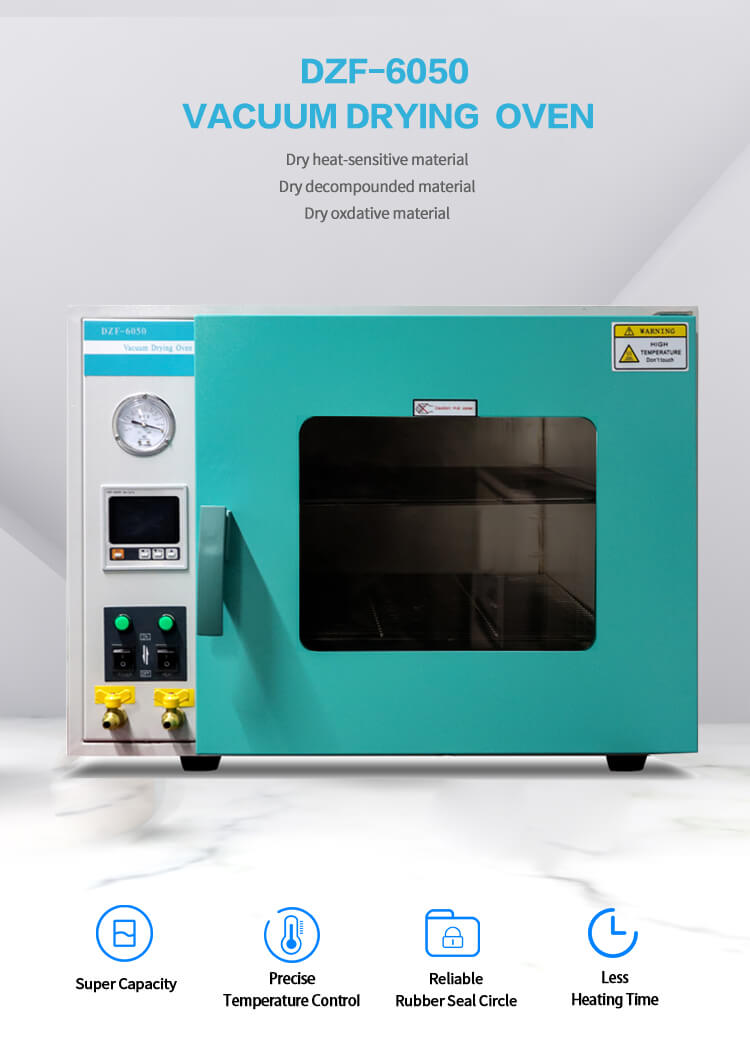Drying is a critical process in various industries, ranging from pharmaceuticals to food production and chemical manufacturing. However, the method of drying can significantly influence the quality and properties of the final product. Among the most common drying methods are vacuum drying and air drying, each with its unique advantages, applications, and limitations. But what exactly differentiates vacuum drying from air drying, and when should one method be chosen over the other? Let's explore these questions in detail, with a particular focus on the vacuum drying oven, a key piece of equipment in the vacuum drying process.
Understanding Air Drying
Air drying is the more traditional and widely used drying method. It involves the removal of moisture from a product through the use of heated air, which evaporates the water content. The process can be done in a variety of ways, from natural air drying at ambient temperature to forced air drying in a controlled environment, such as an industrial oven.
Advantages of Air Drying:
-
Cost-Effective: Air drying is often less expensive than other drying methods because it does not require specialized equipment or complex processes.
-
Simplicity: The process is straightforward, making it easy to implement in various settings, from small-scale operations to large industrial processes.
-
Versatility: Air drying can be applied to a wide range of materials, including food products, chemicals, and more.

Limitations of Air Drying:
-
Time-Consuming: Depending on the material and conditions, air drying can take a considerable amount of time, which may not be suitable for processes that require rapid drying.
-
Heat Sensitivity: Some materials, particularly those sensitive to heat, may degrade or lose their quality during air drying due to the exposure to high temperatures.
-
Inconsistent Results: Air drying can sometimes lead to uneven drying, particularly for materials with varying thicknesses or moisture content.
Exploring Vacuum Drying
Vacuum drying, on the other hand, is a more advanced drying technique that involves reducing the pressure inside a sealed chamber to below atmospheric levels. By doing so, the boiling point of water (or other solvents) is lowered, allowing moisture to evaporate at much lower temperatures than in air drying. This process is typically carried out in a vacuum drying oven, a specialized piece of equipment designed to create and maintain these low-pressure conditions.
Advantages of Vacuum Drying:
-
Low-Temperature Drying: One of the most significant benefits of vacuum drying is that it can be performed at lower temperatures, making it ideal for heat-sensitive materials.
-
Faster Drying Times: The reduced pressure in a vacuum environment accelerates the drying process, making it much faster than traditional air drying.
-
Preservation of Quality: Because vacuum drying occurs at lower temperatures and more controlled conditions, it helps in preserving the chemical and physical integrity of the material being dried.
-
Energy Efficiency: Vacuum drying can be more energy-efficient than air drying, especially when drying materials that require prolonged drying times at high temperatures.

Limitations of Vacuum Drying:
-
Higher Initial Cost: The equipment required for vacuum drying, such as vacuum drying ovens, is typically more expensive than that used for air drying.
-
Complexity: The process of vacuum drying is more complex and may require skilled operators to ensure optimal results.
-
Limited Capacity: Depending on the size of the vacuum drying oven, the volume of material that can be dried in a single batch may be limited compared to air drying methods.
The vacuum drying oven is at the heart of the vacuum drying process. This specialized piece of equipment is designed to create and maintain the vacuum environment necessary for efficient and effective drying. But what makes a vacuum drying oven so essential in various industrial processes?
Design and Functionality:
-
Sealed Chamber: The core of a vacuum drying oven is its sealed chamber, which is capable of withstanding the reduced pressures needed for vacuum drying. The chamber is usually made of stainless steel to ensure durability and resistance to corrosion.
-
Vacuum System: A vacuum pump is used to evacuate air from the chamber, creating the low-pressure environment necessary for vacuum drying. The system is designed to maintain a consistent vacuum level throughout the drying process.
-
Temperature Control: Even though vacuum drying occurs at lower temperatures, precise temperature control is still crucial. Advanced vacuum drying ovens are equipped with sophisticated temperature control systems to ensure that the material is dried under optimal conditions.
-
Safety Features: Given the reduced pressure and potential for volatile substances, vacuum drying ovens are equipped with safety features such as pressure relief valves and temperature cutoffs to prevent accidents.

Applications:
-
Pharmaceuticals: In the pharmaceutical industry, vacuum drying ovens are used to dry active pharmaceutical ingredients (APIs) and other heat-sensitive compounds without degrading their potency.
-
Food Industry: Vacuum drying is employed to preserve the color, flavor, and nutritional content of food products, making it a preferred method for drying fruits, vegetables, and other perishable items.
-
Chemical Industry: Vacuum drying ovens are used to dry chemical compounds and intermediates, particularly those that are sensitive to heat or prone to oxidation.
-
Research Laboratories: In research settings, vacuum drying ovens are used to prepare samples and remove moisture from delicate materials, ensuring that experimental conditions are controlled and reproducible.
When Should Vacuum Drying Be Chosen Over Air Drying?
Given the distinct characteristics of vacuum drying and air drying, how does one decide which method to use? The decision often hinges on several key factors:
-
Material Sensitivity: Is the material being dried sensitive to heat? If so, vacuum drying is likely the better choice due to its lower operating temperatures.
-
Time Constraints: Does the drying process need to be completed quickly? Vacuum drying offers faster drying times, making it suitable for time-sensitive applications.
-
Quality Requirements: Is it essential to preserve the material's physical and chemical properties? Vacuum drying can better maintain the integrity of the material compared to air drying.
-
Cost Considerations: While vacuum drying offers numerous advantages, it is also more costly. If budget constraints are significant, air drying might be the preferred option, provided the material can withstand the process.
Example Question: Could vacuum drying enhance the quality of your product while reducing processing time? The answer often depends on the specific requirements of your application, but for heat-sensitive and high-value materials, the benefits of vacuum drying frequently outweigh the costs.

Common Misconceptions About Vacuum Drying
Despite its clear advantages, vacuum drying is sometimes misunderstood or overlooked in favor of more traditional methods. Here are some common misconceptions:
-
Vacuum Drying Is Too Expensive: While the initial investment in vacuum drying equipment, like a vacuum drying oven, can be higher, the long-term savings in energy costs, reduced waste, and improved product quality often justify the expense.
-
Vacuum Drying Is Only for High-Tech Industries: Although widely used in industries like pharmaceuticals and electronics, vacuum drying is also applicable in food processing, agriculture, and other sectors where preserving product quality is paramount.
-
Air Drying Is Always Simpler: While air drying is less complex in terms of equipment, it can be more challenging to control the drying environment, leading to inconsistent results, especially with sensitive materials.
Example Question: Is air drying really simpler, or could it be introducing variability into your process? Consider whether the perceived simplicity of air drying might be masking underlying inefficiencies or quality issues.
Conclusion
In the debate between vacuum drying and air drying, there is no one-size-fits-all answer. Each method has its place, and the choice depends on the specific needs of the application. Vacuum drying, with the use of a vacuum drying oven, offers significant advantages in terms of speed, quality preservation, and energy efficiency, making it an excellent choice for industries where these factors are critical. However, air drying remains a viable option for less demanding applications, particularly where cost is a primary concern.
Final Question: Could the benefits of vacuum drying transform your production process? Evaluating the specific requirements of your material and application is crucial in making an informed decision. For many, the shift to vacuum drying represents a step forward in achieving higher quality, more consistent results, and greater efficiency.
By understanding the differences between these two drying methods and considering the role of vacuum drying ovens, businesses can make informed choices that align with their production goals and quality standards.

 Products
Products
























